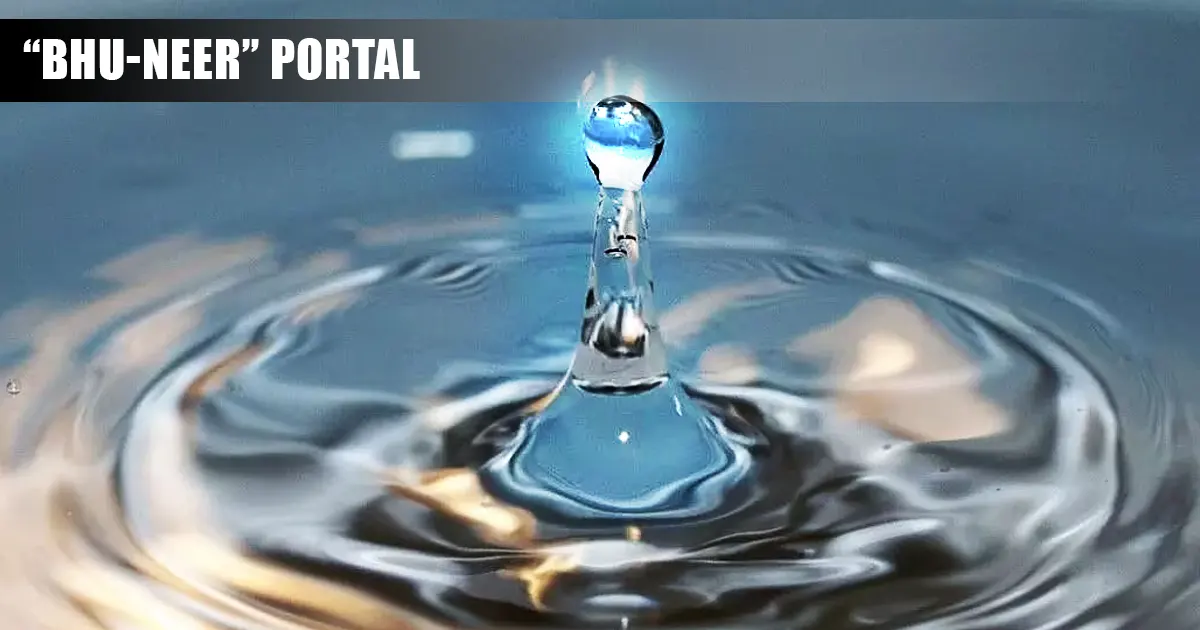
Overview:
The Ministry of Jal Shakti launched the “Bhu-Neer” portal at the concluding ceremony of India Water Week 2024. It has been developed by the Central Ground Water Authority (CGWA), in partnership with the National Informatics Centre (NIC), with the goal of enhancing groundwater regulation across the country.
Key Features of “Bhu-Neer”
- PAN-Based Single ID System:
This system allows users to utilize their Permanent Account Number (PAN) as a unique identification for all groundwater-related activities. - NOC with QR Code:
The portal issues No Objection Certificates (NOCs) embedded with QR codes for easy authentication and verification. - Centralized Database:
A comprehensive database provides information on the legal frameworks governing groundwater extraction, state and national regulations, and critical data on compliance, policies, and sustainable practices. - Ease of Doing Business:
The portal streamlines groundwater regulation processes, making them user-friendly and entirely online.
Water Scenario in India
- Water Scarcity:
India supports 18% of the global population but has only 4% of the world’s freshwater resources, placing it among the most water-stressed countries. This imbalance underscores the severity of water shortages. - Groundwater Depletion:
Groundwater is a critical resource, meeting 80% of the drinking water needs and two-thirds of irrigation requirements. Over-extraction has led to a steep decline in water tables, especially in agricultural states like Punjab. - Water Pollution:
Around 70% of India’s water sources are polluted. Nearly half of the country’s rivers are unsafe for drinking and irrigation, ranking India 120th out of 122 countries on the Global Water Quality Index 2024. - Rural Water Access:
About 163 million Indians lack access to safe drinking water. High-to-extreme water stress affects over 600 million people, with rural areas still depending on unsafe water sources. - Climate Vulnerability:
Climate change has intensified droughts and floods, disrupting water availability. Projections suggest that by 2030, India’s water supply will meet only 50% of its demand.
Causes of India’s Water Crisis
- Rapid Population Growth and Urbanization:
Increased demand for water due to population growth and urban expansion has severely strained existing resources and infrastructure. - Inefficient Agricultural Practices:
Agriculture consumes 80% of India’s freshwater. Reliance on water-intensive crops and inefficient irrigation methods exacerbates the problem. - Water Pollution:
Industrial effluents, untreated sewage, and agricultural runoff have contaminated rivers, lakes, and groundwater, reducing the availability of potable water. - Depleting Groundwater Reserves:
Over-extraction of groundwater, particularly in Punjab, Haryana, and Rajasthan, has caused a significant decline in water levels. - Climate Change:
Erratic rainfall patterns, frequent droughts, and disrupted monsoons have worsened the water crisis, particularly in semi-arid and drought-prone regions. - Over-Reliance on Monsoons:
India’s heavy dependence on monsoons for replenishing water sources makes it vulnerable to rainfall variability. - Unequal Distribution and Access:
Regional disparities in water availability result in acute shortages in some areas while others have an abundance of resources, with rural and marginalized communities suffering the most. - Weak Governance:
Inconsistent policies, fragmented regulations, and weak enforcement undermine effective water management efforts.
Government Initiatives on Water Management
- Atal Bhujal Yojana
- Jal Jeevan Mission (JJM)
- Pradhan Mantri Krishi Sinchayee Yojana
- Jal Shakti Abhiyan – Catch the Rain Campaign
- National Mission for Clean Ganga (NMCG)
India Water Week 2024
- Objective: To address critical water management challenges and promote innovation in water-related technologies and practices.
- Theme: ‘Partnerships and Cooperation for Inclusive Water Development and Management’.
- International Participation: Countries such as Denmark, Israel, Australia, and Singapore shared their innovations and experiences. Notably, China and Bangladesh did not participate.
[box]
The launch of the “Bhu-Neer” portal by the Ministry of Jal Shakti reflects India’s proactive approach to addressing its groundwater challenges. Analyze the key features of the portal and discuss its significance in the context of India’s water crisis. What additional measures can be taken to ensure sustainable water management in India?
[button color=”purple ” size=”medium” link=”https://forms.gle/Wzz7M6oVE4bQS8Ws8″ icon=”” target=”true”]Upload Answer[/button]
[/box]




